For the past few years, Huawei has been working hard to make sure its flagship devices remain competitive with Samsung and Apple. The design, performance and camera capabilities of Huawei's Mate and P-series smartphones did the job, but last year Huawei kicked things into overdrive with the Huawei P20 Pro and Mate 20 Pro.
At yesterday's unveiling of the new Huawei P30 series, the company showed no sign of slowing down, especially on the camera front. While the P30's cameras offer a huge step up over last year's P20, the P30 Pro is the device to get if you're looking for the ultimate camera experience on a smartphone. Huawei even boasted that the new device will usher in a "new era of smartphone photography."
Right out of the gate, the Huawei P30 Pro beats the competition simply with the number of camera sensors its features on the back of the phone. Huawei has crammed in a total of four sensors, one of which features a periscope-style 5X telephoto lens. The main camera is equipped with a 40MP sensor with an incredible f/1.6 lens. A second 20MP sensor is then paired with a 16mm ultra-wide lens and the third 8MP sensor sports a 125mm 55 telephoto, f/3.4 periscope lens. The fourth sensor on the P30 Pro is a ToF sensor which is used for more accurate depth calculations for improved portrait images which Huawei claims can accurately map a subject's hair so that it doesn't blur into the background.
While that may seem like a lot, Huawei also decided to change the sensor technology as well. Rather than opting for the traditional RGGB sub- Pixel array that nearly all camera sensors use, the Huawei P30 camera sensors use an RYYB sub-pixel layout. The reason for the change is that this configuration allows each pixel to capture 40% more light. On top of that, the sensor on the P30 Pro is also capable of ISO 409,600, allowing the phone to capture images with as little as 1 LUX of light.
Rather than simply giving us the specs and calling it a day, Huawei decided to show off what the cameras on the Huawei P30 Pro are capable of.
Huawei started their comparison with images captured in a dark room with a mother and daughter. The images from the Samsung Galaxy S10+ and Apple iPhone Xs Max turned out dark as you'd expect, but thanks to the new sensors and the ISO capabilities of the P30 Pro, Huawei's phone delivers an image which looks like it was captured during the day.
Huawei even showed off images of the night sky over Africa. The images captured by the Apple and Samsung phones were completely black, but the one from the Huawei P30 Pro highlighted a tree, the hills in the background, the gradient sky and quite a few stars. This example was skewed a bit in Huawei's favor since the shutter time was 0.85 seconds on its device versus 0.25 on the other two phones.
In true Huawei fashion, the comparisons then shifted dramatically in the company favor with shots like these which showed a 1/4-second exposure from the iPhone, a 10-second exposure from the Galaxy S10+ and 30-second exposures from the P30 and P30 Pro.
At this point, Huawei's CEO took a jab at Samsung, noting that "the Galaxy phone cannot see the galaxy. But with the Huawei P30 and P30 Pro, you can see the galaxy."
Huawei then shifted its focus to the 5X telephoto lens of the phone, showing side-by-side comparisons with its main competitors. This image here is from a sight chart which was photographed from across the room. When zoomed in, the image from the Huawei P30 Pro is the only one that retains enough details to reveal the small letters on the chart.
Driving the point home, Huawei then highlighted an image of the moon. The iPhone came in dead last, simply showing a white blob in the sky. The Samsung Galaxy S10+ fared better, revealing a lot more detail than the iPhone, but Huawei's device (which is capable of 50X digital zoom) delivered an astounding image incredible detail.
While on-stage comparisons like these are never truly fair, it's clear that the new sensors that Huawei is using in the P30 and P30 Pro have a leg up on the competition.
from Phandroid https://ift.tt/2U0sizb
via IFTTT
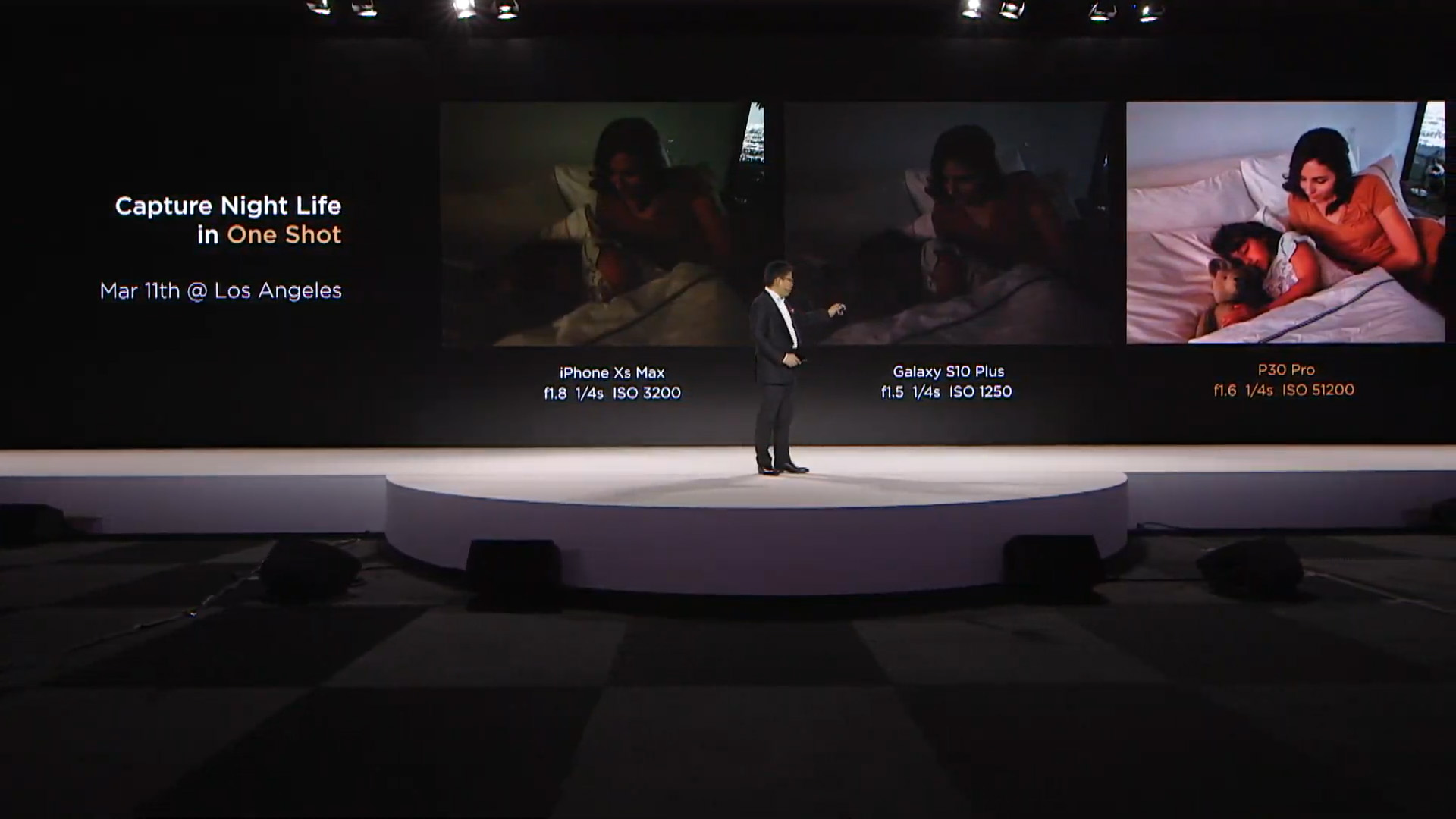
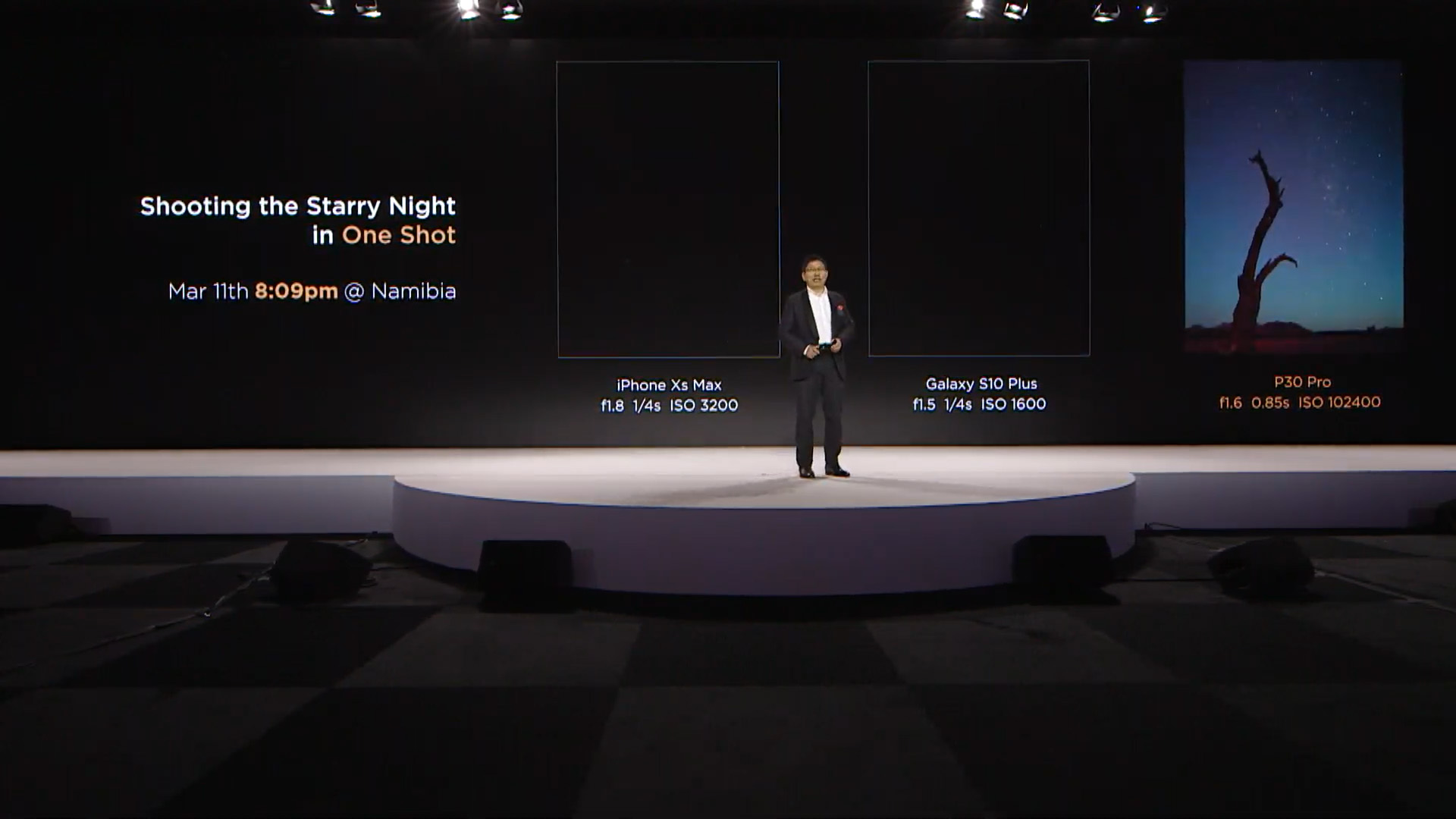
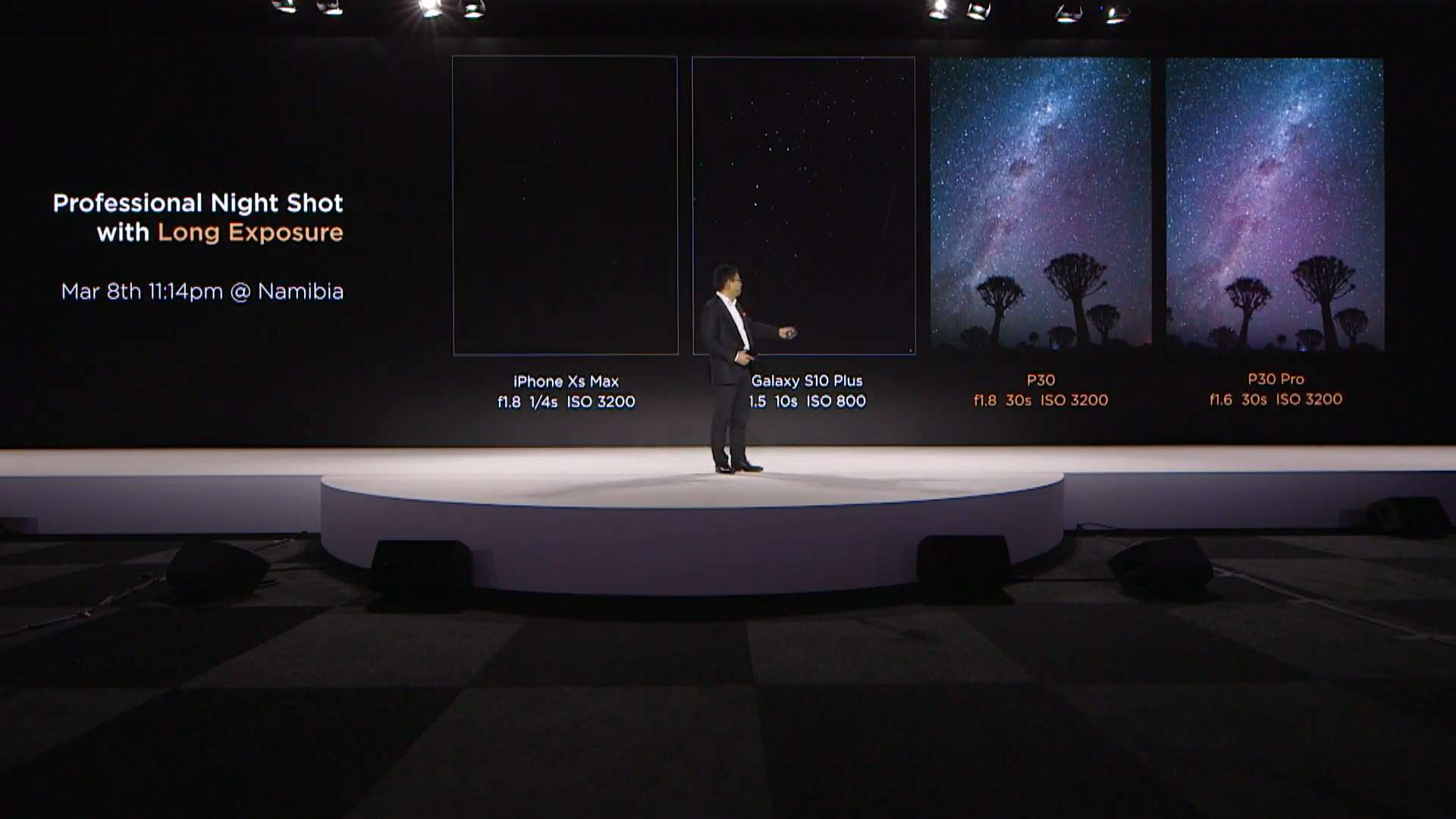
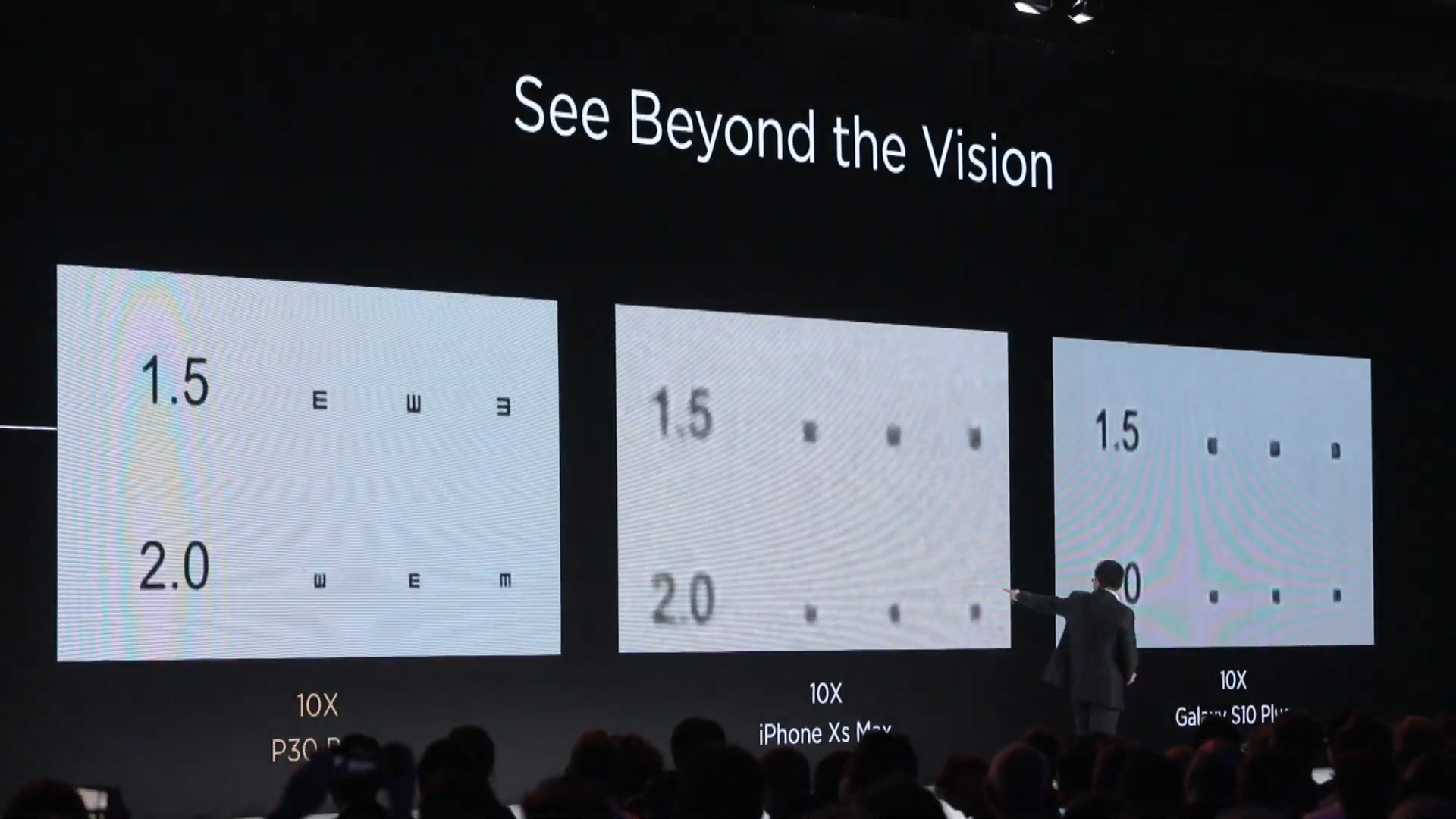
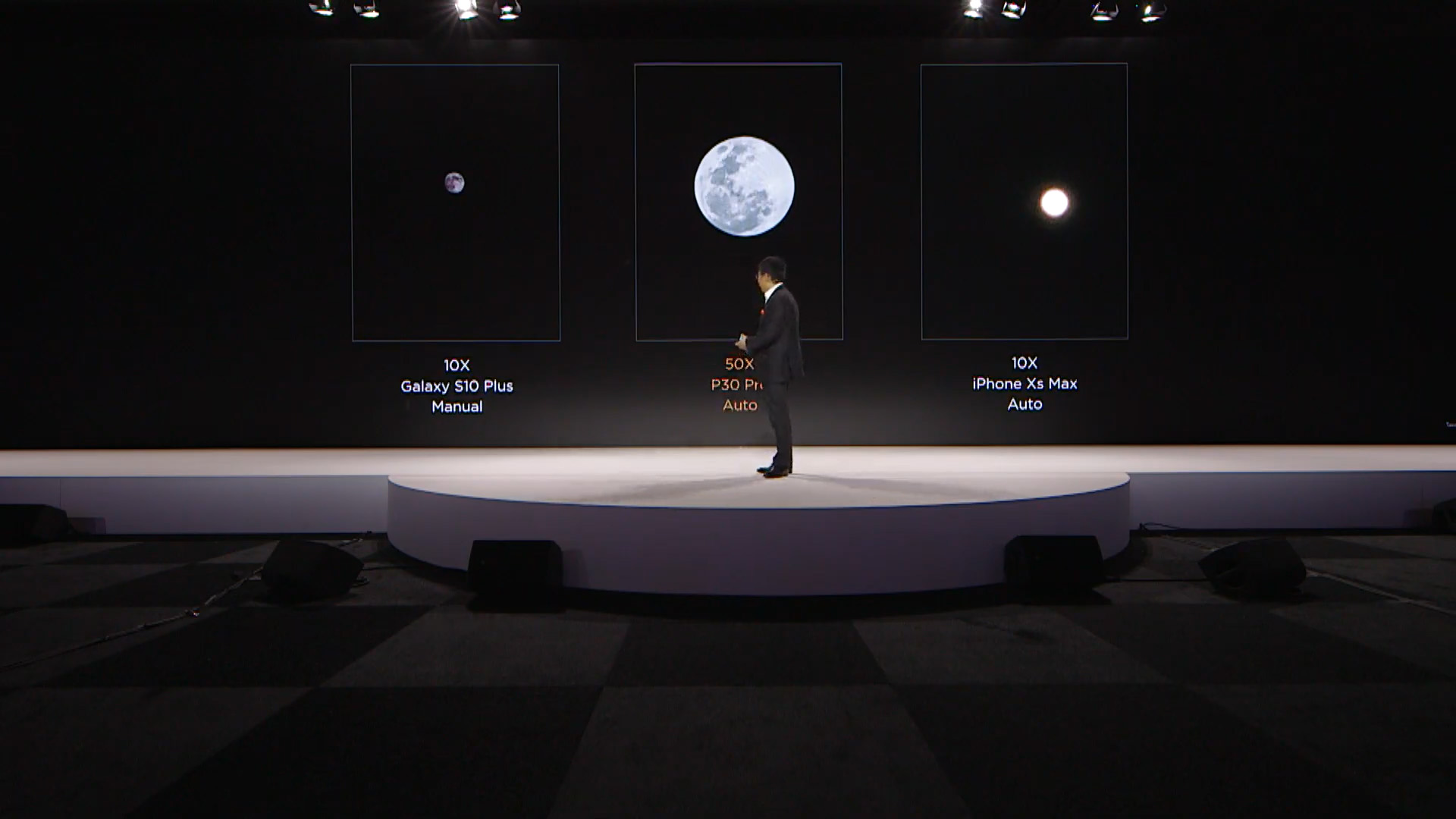
No comments:
Post a Comment